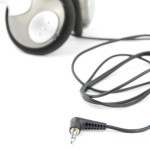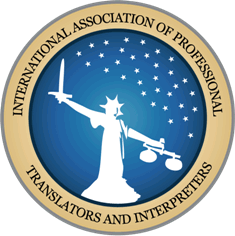 Everything You Always Wanted to Know About Translation & Interpreting (but were afraid to ask)
Everything You Always Wanted to Know About Translation & Interpreting (but were afraid to ask)
Translation
My text is only a couple of pages, surely it can’t take longer than an hour to translate it, right?
Well, … no, not quite right 😉 While productivity depends largely on individual translator’s skills, knowledge and expertise, it also highly depends on the nature of the text itself. Well written, clear and precise text is usually a pleasure to deal with and it can takes less time to translate it. One of the aspects frequently overlooked by clients is the need for translator to become familiar with your company specific terminology. Not only the field terminology, the industry lingo, but also the terminology used specifically by your company. A good example are job titles and department names, product names, project titles and such. They need to be researched first by the translator which typically involves checking your website, checking your published communications, perhaps consulting your style guide (if you have one). While this process does not add any significant amount of time to a large project, it may add an hour or two to the otherwise short translation. But skipping this step is a very wrong thing to do – it leads to awkward, inconsistent and simply bad translation.
What if instead of hiring professional translator I use one of online machine translators?
If all what you need is general understanding what the text is about – is it a medical record or product description or a piece of a press article, than yes, with machine translation you will get that. You will also get a lot of weird phrases, messed up sentences and plainly incomprehensive fragments. So, if you just need to assess whether the text in a foreign language would be at all interesting for you – than yes, one of the options is using an online machine translator, and if you need to read and understand it in full – order a professional translation of it.
However, if you need to communicate to foreign audience, be it through your website, press release, letter, sign or anything really – steer clear from machines as far as you can as it may cost you a fortune in lost business, definitely times more than hiring a professional. In the best case scenario your prospective clients or partners will just ignore your message and go somewhere else, in the worst case you might be held liable for misinformation. In the era of social media you will also risk to be ridiculed on one of the ‘funny translation’ sites (search the web for this phrase to see for yourself).
OK, I know that free machine translators available on the Web do not provide quality translation, but don’t you as professionals use some kind of professional software which translates for you?
The answer to that is two-folded: no, we don’t use machine translation and yes, we do use professional software  The collective term is Computer Assisted Translation tools (CAT tools) which are powerful engines allowing for advanced terminology management, quality assurance, project management and much more. It helps us to provide consistent terminology throughout large projects, avoid omissions, misspellings and such, as well as to preserve even complex formatting. While it automates many management processes and helps us to correct errors resulting from human distraction, it does not process thoughts and concepts from one language to another – this can only be done by human brain. Still.
The collective term is Computer Assisted Translation tools (CAT tools) which are powerful engines allowing for advanced terminology management, quality assurance, project management and much more. It helps us to provide consistent terminology throughout large projects, avoid omissions, misspellings and such, as well as to preserve even complex formatting. While it automates many management processes and helps us to correct errors resulting from human distraction, it does not process thoughts and concepts from one language to another – this can only be done by human brain. Still.
Why translators always ask for “editable” files? What’s the difference for you between .doc file and scanned .pdf?
The difference is fundamental: editable file coming from any word processing software allows us to exactly preserve original formatting of the source text so the translation will have exactly the same fonts, images, headers, footers, highlights and so on. And the process is seamless on our end so we can focus on translation and not on DTP. This cannot be achieved with image files (such as .jpg, scanned .pdf, etc.) where formatting must be done from the scratch – which is a separate job in itself, takes considerable amount of time and it is charged accordingly. And once you already invested the time and money in the look of your PowerPoint® presentation while writing it, you don’t want to pay for it again when you need a translation. And a DTP job may even double your translation bill.
Interpreting
What does consecutive interpreting mean? What is the difference between simultaneous and conference interpreting?
There are three modes of interpretation of human speech into a foreign language:
Consecutive – where the speaker breaks his or her speech into short segments – usually sentences, and stops after each sentence so the interpreter, who usually stays next to the speaker, can interpret it into the foreign language. This mode is frequently used during meetings where the number of participants is less than 10-15 people, during site tours or workshops where there is a lot of direct interaction between the speaker and individual participants. This mode can only be used when interpreting into one foreign language (and vice-versa). It enables more direct contact between the speaker and the audience, but the flaw is that it practically doubles the time of the meeting.
 Simultaneous, also known as Conference interpreting – where the speaker does not pause and the interpreter provides interpretation simultaneously. This mode requires that the speaker uses a microphone, interpreters (2 of them for a given language pair)) are located in a soundproof interpreting booth and equipped with headphones (where they hear the speaker) and the microphone which transfers their interpretation into the headphones worn by the participants. This is used during large meetings and conferences, during international events with participants from different countries. There might be a number of booths providing interpretation simultaneously into several languages. Each booth is configured for one language pair and is manned by 2 interpreters who switch typically every 30 minutes.
Simultaneous, also known as Conference interpreting – where the speaker does not pause and the interpreter provides interpretation simultaneously. This mode requires that the speaker uses a microphone, interpreters (2 of them for a given language pair)) are located in a soundproof interpreting booth and equipped with headphones (where they hear the speaker) and the microphone which transfers their interpretation into the headphones worn by the participants. This is used during large meetings and conferences, during international events with participants from different countries. There might be a number of booths providing interpretation simultaneously into several languages. Each booth is configured for one language pair and is manned by 2 interpreters who switch typically every 30 minutes.
Whisper interpreting also known as Chuchotage – this is a form of simultaneous interpretation sometimes used during short meetings where there is only one or maximum two participants who require interpretation of the speeches. The interpreter sits next to this participant and interprets with a low voice directly to the ear of this participant. This is definitely the least comfortable technique for both the interpreter and the participant since both are being distracted by the speech itself and the noises from the room while at the same time they need to try not to bother other participants and the speaker. Just as in the case of simultaneous interpretation from the booth, 2 interpreters are required for whispering, too, so they can switch approximately every 30 minutes.
Telephone interpreting also known as Over-the-Phone Interpreting – conference calls, virtual meetings, webinars became a daily routine in globally operating organizations. Conference call technology enables also participation of an interpreter. Interpretation is done in consecutive mode and typically is charged by the hour.
I need simultaneous interpreting for a lecture which will only take 2 hours and some questions and answers. Why do I need two interpreters in the booth?
Simultaneous interpretation when done on a top level may seem effortless, but as a matter of fact listening and talking AT THE SAME TIME plus processing it into another language on the go requires tremendous effort and maximum concentration. It is known from experience that trained, qualified professionals can maintain 100% focus and top speed brain work for about 30 minutes or so. After that their ability to process words decreases dramatically – they need to break for a while, give themselves a short rest. That is why after half an hour or so the second interpreter takes over and they continue switching. This allows for top quality interpreting throughout the whole event.
Doing business with us
How big is your email inbox, can you accept 50MB file?
For large and MB-heavy files we prefer using online file transfer facilities as they make the process faster and simpler. Contact us for more details.
My documents include sensitive and confidential information. How do I go about the security?
First of all you may consider protecting your files with a password. In that case we will also password protect the translated files. Using secure file transfer channels (available commercially) adds additional level of protection. On our end we never send your documents anywhere, we don’t share them with anybody (unless specifically instructed by you) and we take reasonable steps to protect them.
How do you calculate your rate for translation: per word, per page, per key stroke?
Typically we calculate the number of words and multiply it by our per-word-rate. However, different standards exist on different markets and we try to accommodate that. For example, prevailing method of calculation in Poland is per (standard) page so for Polish clients we rather quote per page.
How do you calculate word count in different file formats?
Counting words in electronic files can be tricky, that is why we use professional software for it. It allows us quickly and accurately count the number of words or standard pages or even keystrokes in .doc .docx, .rtf, .xls, .xlsx, .ppt, .pps, .pptx and .html files.
What if I don’t like your translation?
We always strive to deliver the best quality translation. We also listen to our Clients and follow their requirements as for the style and terminology. If there is anything you are not happy about our translation, tell us immediately and we will respond either by revising or by explaining.
Do you provide conference booths and sound technicians, too?
 We don’t own booths or sound equipment, but we have worked with many great suppliers and will be happy to advise you on how to select the best one for your needs. Even if we provide interpreting in English and Polish combination only, we are able to recommend trusted professionals in other language combinations, too. Contact us, and we will be happy to help.
We don’t own booths or sound equipment, but we have worked with many great suppliers and will be happy to advise you on how to select the best one for your needs. Even if we provide interpreting in English and Polish combination only, we are able to recommend trusted professionals in other language combinations, too. Contact us, and we will be happy to help.
If you haven’t found the answer to your question, ask us!
Use our Contact form or comment on our Blog




